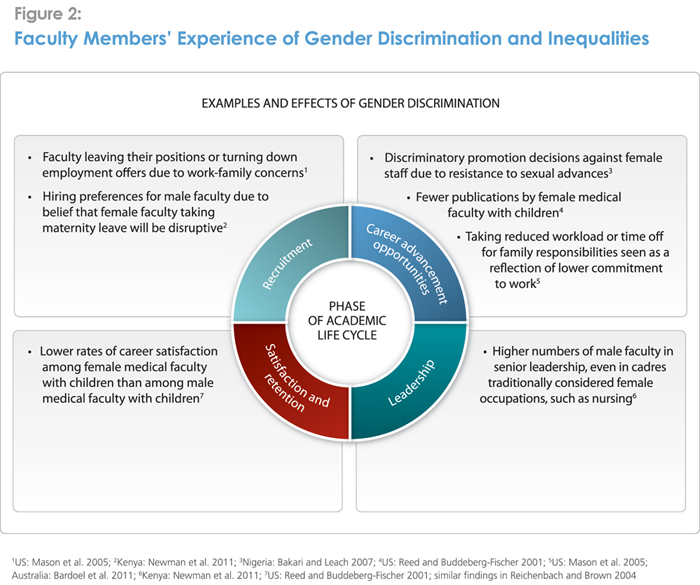Forms of gender discrimination in preservice education settings (continued)
Faculty
Figure 2 describes examples from the literature of gender discrimination against health PSE and other higher education faculty members throughout their professional life cycle. Gender segregation within an occupation prevents fuller female representation in more senior decision-making positions and professional networks, and limits career advancement opportunities (George 2007). An academic culture of long working hours and the perception that faculty with family responsibilities are less committed affect decisions about promotions and tenure in both health PSE and general higher education institutions. A University of California faculty survey respondent stated, “Graduate students pick up the signal very early: devote time to family or community at your own risk” (Mason et al. 2005, 8). A Kenyan clinical preceptor who faced a different source of discrimination observed, “As a woman, domestic responsibilities become a major hindrance to advance my training because I have to seek consent from my spouse to go back to school” (Newman et al. 2011, 30).
Gender discrimination is also found in requirements to obtain promotions, such as training that requires travel or seniority, which can be particularly difficult to meet for women with family responsibilities. These forms of discrimination influence faculty’s options, self-confidence, and career satisfaction. In turn, they can affect the quality of education being provided at PSE institutions and contribute to faculty attrition rates (George 2007).


